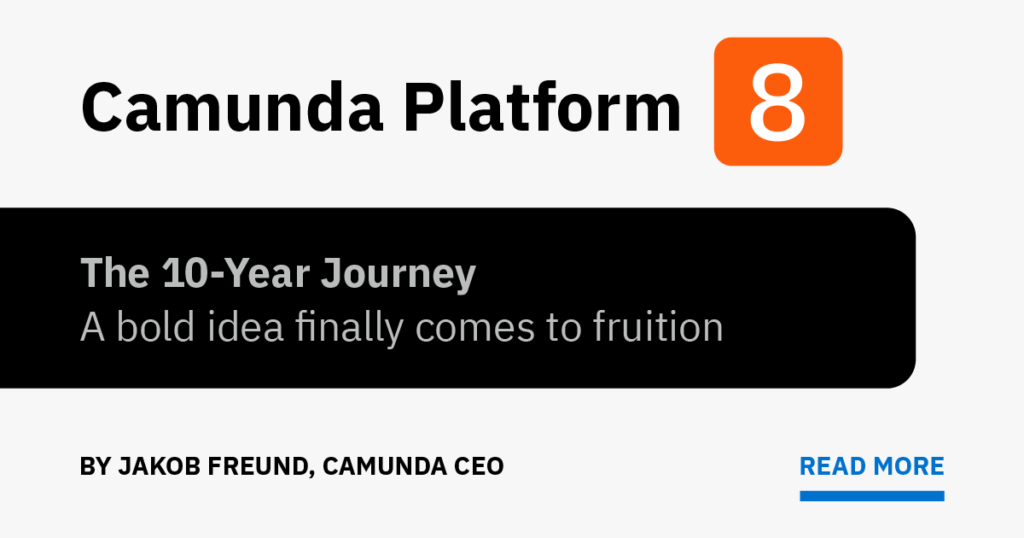A bold idea finally comes to fruition with Camunda Platform 8
In March 2013 Camunda BPM 7.0 was launched. In the following nine years, we have developed the product to today’s version 7.17 (now called Camunda Platform), which is used by thousands of developers for automating core business processes.
What few people know is that ten years ago in 2012, even before Camunda BPM 7 launched, our CTO Daniel Meyer shared with me his vision of a workflow engine that is based on event-streaming rather than relational databases. That was a bold idea, and we knew it would take many years to realize it. So we decided to launch Camunda BPM based on traditional paradigms, while pursuing Daniel’s vision in stealth mode, as an R&D project that eventually became Zeebe. You can find the full Zeebe story in this blog post that I wrote in 2019 for its GA release.
We published Zeebe as a source-available project, so developers could use it for free and get access to the source code. The feedback from the community, especially in the microservices space, was highly encouraging. Last year we productized Zeebe with Camunda Cloud (which, despite its name, has been available both as a service as well as self-managed right from day one), that includes additional tools, e.g. for operations.
Since then, numerous customers have signed up for Camunda Cloud, with use cases that are at times nothing short of stunning. For example, Goldman Sachs – a longtime Camunda Platform 7 power user – decided to embrace Camunda Cloud and its cloud-native architecture to power a new payments platform. They will be spotlighting this project at Camunda Community Summit on April 28.
It’s been almost 10 years since Daniel initially spoke about a new kind of workflow engine, and since then we’ve been researching, developing, and hardening it in practice. I think you could call Zeebe a groundbreaking-yet-battle-proven innovation, so we decided that now is the right time to put Camunda Cloud at the forefront of our go-to-market strategy and make it available to all our existing Camunda Platform 7 customers, hence releasing the newest version as Camunda Platform 8 – available both as a service and self-managed.
Besides Zeebe, there are actually a great deal of additional improvements and features coming with Camunda Platform 8. You can learn more about them in this general release blog post, and in this more detailed technical blog post. But the best way to check out the new version is by trying it out!
One of the things that I have come to appreciate as a founder CEO, is the incredible power of a clear vision and relentless perseverance. Overnight successes are rare, and when they do occur, they rarely last very long. But being persistent when pursuing your vision, and holding a steady course despite all setbacks and distractions, can get you almost anywhere.
Camunda Platform 8 is a huge step toward our vision of the universal process orchestrator, allowing you to orchestrate all your people, systems, and devices along BPMN process models that bring business and IT together, and doing this reliably and at scale. I am grateful for our team, customers, and partners who made Camunda Platform 8 possible, and I’m very much looking forward to realizing our vision, the Universal Process Orchestrator, together with all of you.
Because once you can orchestrate anything, you can automate everything.
Watch as Camunda Co-founders Jakob Freund and Bernd Ruecker reflect on our journey to Camunda Platform 8.

